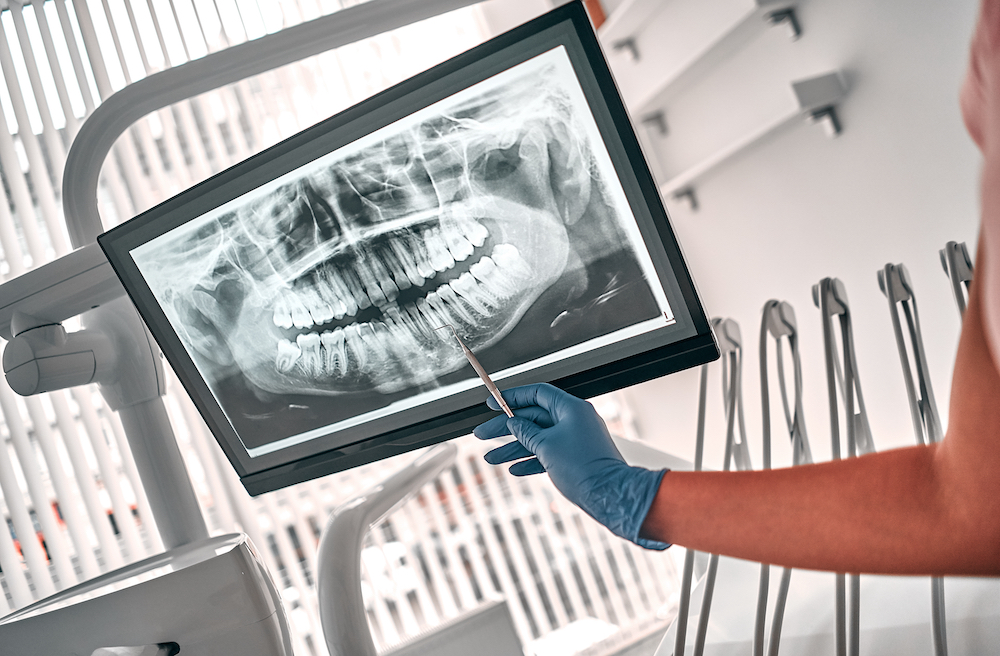
Dental X-rays are essential for diagnosing and formulating oral health care plans. They give dentists the necessary knowledge about the teeth's structure and health. They also provide information on the condition of the bone around them, which is not visible during a clinical examination.
What Are Dental X-rays?
Dental X-rays, or radiographs, are images of the teeth, jaws, and surrounding structures taken using ionizing radiation. Dentists can use these images to view the bones, roots, and abnormalities like tumors, cysts, cavities, and impacted teeth. They can also view the internal structures of the teeth and jaws.
Types of Dental X-rays
Dental X-rays come in various shapes and sizes, each with a unique application and indication set. These include bitewing, periapical, panoramic, and CBCT scans. It is best to be aware of the various kinds of dental X-rays, their applications, and their advantages and disadvantages.
Bitewing X-rays
These X-rays capture the upper and lower teeth on one side of the jaw. They can help detect cavities between the teeth, known as interproximal decay. Dentists also use them to monitor periodontal disease by showing a bone loss or recession.
Peripheral Radiographs
These aim to assess the condition of the tooth roots and surrounding bone. They show the whole tooth, from the crown to the tip of the roots.
Panoramic Radiographs
These aim to assess the condition of the teeth, jaw, and sinuses since they provide a broad view of the entire jaw.
Cone Beam Computed Tomography Scans
These scans provide a detailed 3D image of the jaw and surrounding oral structures. Dentists employ these scans to assess challenging situations like tumors, cysts, and teeth lodged in the jaw.
Uses of Dental Radiographs
Dental radiographs can help dental professionals find various oral health problems. These include cysts, abscesses, cavities, impacted teeth, periodontal disease, and tumors. They also significantly affect the preparation for dental procedures like braces, root canals, and tooth extractions.
Benefits
Early oral health problem detection can help stop the emergence of more severe conditions and the requirement for more involved treatments. That is one of the benefits of dental X-rays. They also assist dentists in developing more precise treatment plans.
Dental X-rays are essential for diagnosing and formulating practical oral health care plans. They help dentists develop more precise treatment plans. They provide critical information that is not visible during a clinical examination. They have more advantages than disadvantages. That said, you should take safety measures like wearing lead aprons.
They are now a necessary part of dentistry. They help dentists diagnose and treat various oral health problems more precisely. Also, they are crucial to maintaining good oral health. For the best results, it is best to consult your dentist. You must also abide by their recommendations regarding how frequently and when to take radiographs.
For more on dental X-rays, visit River Valley Dental at our office in Tremonton, Utah. Call 435-257-7344 to book an appointment today.










